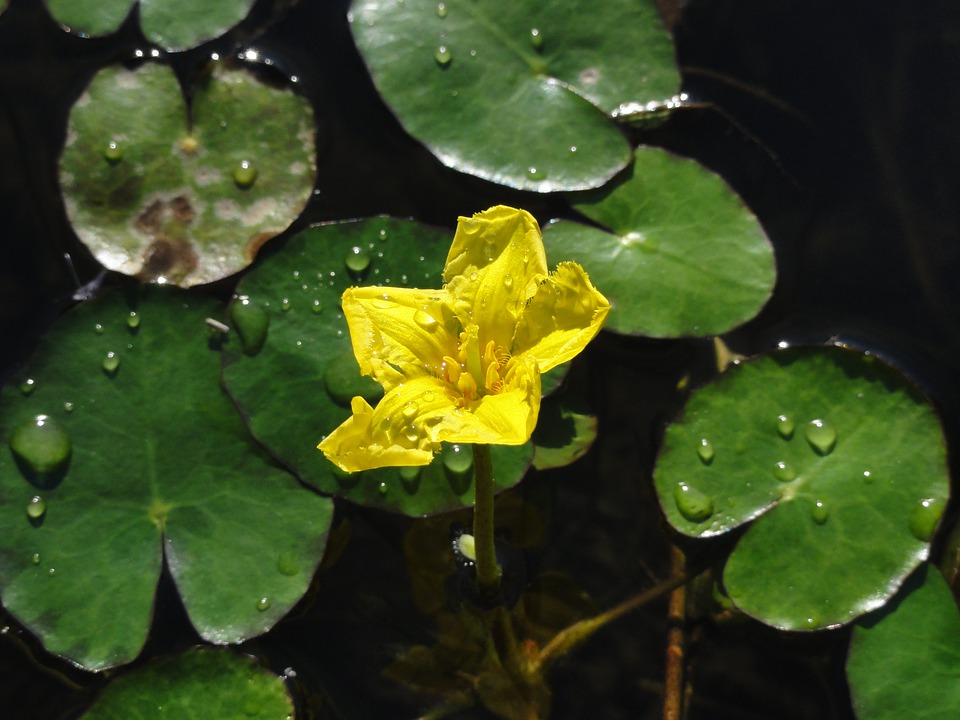 |
Invasive - Eradicate!Just recently found in Wisconsin, Yellow Floating Heart can be very hard to eradicate once established. Yellow Floating Heart is native to Eurasia and the Mediterranean Sea region, as well as Japan, China, and India. In the U.S. |

Plant Description:
Yellow Floating Heart is an herbaceous, perennial, aquatic plant that has long, branching stems up to 0.1 inch thick. It often covers the water surface with long-stalked heart-shaped leaves.
Its leaves are typically opposite and unequal, shaped like a rounded heart, and measure 2-6 inches in diameter. It has bright yellow flowers that rise a few inches above the leaves. Its flowers have five petals with fringed edges, and measure 1-1.5 inches in diameter. The seeds of this plant are contained in beaked capsules that measure 0.5-1 inch in length. The seeds themselves are flat and oval in shape and have ciliate margins that measure 0.1 inch in length.
Hints to Identify
Look for heart-shaped floating leaves with wavy margins and a purplish underside. Showy, yellow, 5-petaled flowers on stalks that rise a few inches above leaves and water surface.
Unlike native water lilies, yellow floating heart typically has two to five distinctly fringed flowers per stalk.
|
Homeowner Treatment Options
|
| Clearcast |
| Imazapyr 4 SL |
| Navigate |
| Shoreline Defense |
| Sonar AS |
| Sonar RTU |
| *Aquatic Biologists recommends implementing preventative management techniques and physical removal prior to, or in conjunction with treatment. |
Common Application Questions
Q. What management option should I use?
A. Control is difficult and eradication may be unrealistic. The best control is to prevent the introduction of any non ‐native aquatic plants from water bodies. Yellow floating heart is very difficult to control through mechanical and chemical means once it has been established. If plants are harvested or cut, all plant pieces should be removed from the water.
Q. How effective are these control options?
Yellow floating heart is a relatively new invasive, so chemical and physical control methods are not well-established, we have listed some possible herbicide control options which most industry professionals and aquatic plant managers agree should work based on the plant's life cycle.
A number of herbicides have been ruled ineffective at controlling yellow floating heart. These include 2,4-D, tirclopyr, diquat and fluridone.
Q. When is the best time to treat?
A. Once water temperatures are around sixty degrees or warmer and/or the plant is actively flowering.
Q. Will the plants come back?
A. If roots are not killed, regrowth may become evident within 4 to 5 weeks
